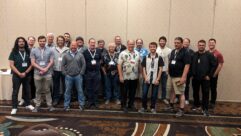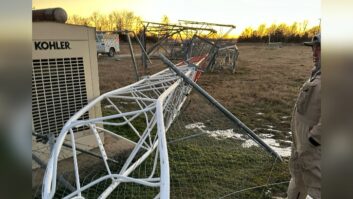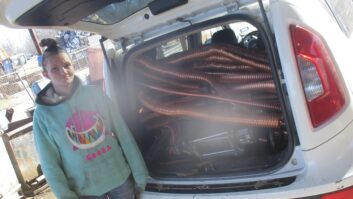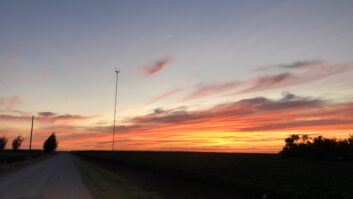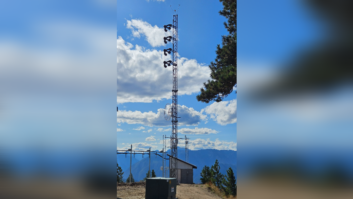Craig Snyder began working as a tower hand in 1984. Today he is chairman of the board of the National Association of Tower Erectors, and is president and CEO of Sioux Falls Tower & Communications.
NATE was formed in 1995. Its annual convention takes place Feb. 18-21 in Dallas.
RW: What has NATE accomplished toward its goals of encouraging uniform safety standards, improved communications and a voice for members?
Snyder: NATE has made tremendous strides … For example, in 1995, most members looked at OSHA as the enemy, and often our focus on safety was a combative defense of the status quo.
We now work as partners with OSHA and have helped them in developing a better understanding of our industry and how it differs from others. This understanding has been very beneficial to our members in that, when OSHA does show up on a site, they are not likely to arbitrarily cite tower erectors for rules that make no sense to our industry.
Furthermore, much of the advances in safety equipment have come through the efforts of the NATE Safety and Education Committee as well as individual members working with the various vendors of this equipment. Tower climbers can now access towers using state-of-the-art personal protective equipment that was not available just five years ago. This has undoubtedly saved lives and (prevented) personal injury.
Finally, NATE has developed numerous safety manuals and videos available to its members that have served to standardize safety practices within the industry. Most of what NATE has done is now accepted as the “standard” for tower workers inside and outside the association.
RW: What is the biggest challenge facing this industry when it comes to loss control?
Snyder: I see the biggest challenge as one facing our customers rather than the tower erector and service companies themselves.
I have seen a trend toward customers choosing to hire general contracting companies who then in turn hire smaller subcontractors who might then actually hire a third company to do the tower work required at the site. Often these smallest companies are not members of NATE and do not use safe practices in performing the required work. Most of the fatal accidents that made the news last year can be traced to this phenomenon.
I think that as more of our customers determine that they will get a better understanding of who is actually doing the work on their towers and make it a requirement that they meet minimum standards of safety, the more likely losses will begin to diminish.
Of course, it is my belief that NATE members are the safest in the industry. It is our job to try to get all tower service companies to join the association. As this continues to happen, a gradual education process will occur.
RW: Broadcasters have expressed a lot of interest in the Koor case in New Hampshire, in which that state’s highest court overruled a city ordinance limiting the height of new communications towers. Do you see that case as precedent-setting?
Snyder: I would like to believe that the Koor case sets a precedent for other zoning officials to look to in developing (or not developing) similar ordinances in the future. But I fear that each jurisdiction will attempt to hold to the notion that towers are basically undesirable and need to be limited.
I think the more times these cases are won in the higher courts, the better chance that a loosening of similar tight regulations will occur.
RW: Characterize your members’ relations with OSHA.
Snyder: Our members’ relations with OSHA have come a long way in the past seven years.
Shortly after NATE came into existence, OSHA formed what they refer to as the “Tower Task Force.” The association’s OSHA Relations Committee works very closely with this tower task force and has been instrumental in getting an OSHA “directive” allowing workers to access towers by “riding the line” from the ground to the required work location on the tower.
OSHA was adamant against this practice before NATE was started, and even for sometime thereafter, but through the process of gentle persuasion and education, NATE has been successful in bringing OSHA around to see our point of view.
NATE and OSHA also formed a partnership in 2002 in one of the national regions in which partnering companies agree to voluntarily abide by certain safety practices in exchange for OSHA focusing on only the most important safety matters at the work site and not citing companies for other more frivolous violations. If this partnership is successful, we hope to expand it to a national level.
I could not say that, at this time, there are any major areas of disagreement between OSHA and NATE. However, we continue to work with OSHA to educate them on such issues as “free climbing,” which is not allowed under current OSHA rules, but is required in certain circumstances on towers or TV antennas. OSHA has been sympathetic to our efforts and we continue to work toward an agreement.
RW: What’s the status of industry hoist and gin pole standard efforts?
Snyder: The gin pole standard that has been the effort of the TIA/EIA committee and NATE is now before the committee in what is hoped to be its final draft form. Unfortunately, the committee has been dedicating most of its efforts toward the revision of ANSI/TIA/EIA 222-“G” and will not likely present it for balloting until later in 2003 or early 2004. A tremendous amount of work has gone into this draft standard and it will be of great benefit to the industry once it is official and released to the public.
The NATE board of directors currently has the first draft of the Hoist Standard in its hands and it is being reviewed. We hope to have it completed by the end of 2003 as well and available to our members by early 2004.
RW: The U.S. Fish & Wildlife Service recently said it was accelerating its efforts to address so-called “bird kills” at tower sites. Some observers feel there is no solid evidence that towers are a threat to wildlife. Where is NATE on this issue?
Snyder: NATE has looked closely at teaming with others in the industry, such as SOMA, to study further the bird kill issue. We feel that the studies done by U.S. Fish and Wildlife and others to date are not conclusive. Based on anecdotal evidence of our members, there is no real problem with birds being killed by flying into towers in any significant numbers.
To date, we have not begun the process of formally studying this issue but hope to make it a priority in the near future.
RW: In an historic move, the FCC has begun to issue fines to radio broadcasters as well as cellular towers for exceeding RF radiation limits at transmission sites. How does this affect your members?
Snyder: NATE, of course, has focused its efforts on worker safety. To this extent we are working on a safety and training video to educate tower workers on risks posed by RF radiation exposure. This video will supplement our “Resource Reference for RF Awareness.” OSHA regulates our members in this regard as opposed to the FCC. We have not heard of an inordinate amount of citations from OSHA regarding RF exposure affecting our members.
What we see as the biggest challenge in this regard is multiple broadcasters or users on one structure. Climbers typically are working for only one station at a time on any given structure and other broadcasters or users don’t feel inclined to reduce or turn off power to their antennas to allow climbers access to their competition’s antennas. This places tower climbers in a difficult position of coordination between multiple users and one that often has no good solution.
RW: What can broadcasters and other wireless companies do to make tower companies’ jobs easier in maintenance and construction?
Snyder: One of the biggest things broadcasters or wireless companies could do to make tower service companies’ jobs easier would be to ensure that their towers are brought up to the latest standards of safety.
For example, all towers should now be equipped with a climbing ladder and safety climb cable or similar device. This allows climbers to be in compliance with current OSHA regulations in accessing the tower and can dramatically limit the risk of falling that is inherent without such devices being installed.
Another great help would be for tower owners to include language in rental contracts with other tenants that allow for simple coordination between the owner and tenants for reducing power during maintenance and other work that requires workers to be in areas where RF radiation exposure is above the allowable threshold.
RW: What is the status of standard EIA-222G, a standard for structural analysis of towers (it replaced 222F)? What structural studies does the insurance industry want?
Snyder: I serve as the chairman of the committee that writes this standard. The past year has been a challenging one for progress in completing revision “G,” mostly due to the incredible downsizing of staffs at the various companies that serve on the committee in key roles with the development of the standard. With smaller staffs the committee volunteers are pressed for time more than ever.
Having said all this, we hope to have the standard out for internal and then public ballot by June 30, and then available for public use by the end of the year. The standard will have major changes over revision F, but will not automatically mean older towers will be rendered obsolete.
Many of the changes will not affect older towers, but will use new approaches in engineering and … bring the standard in compliance with current standards and use.
For information about the NATE convention, go to www.natehome.com.
###




